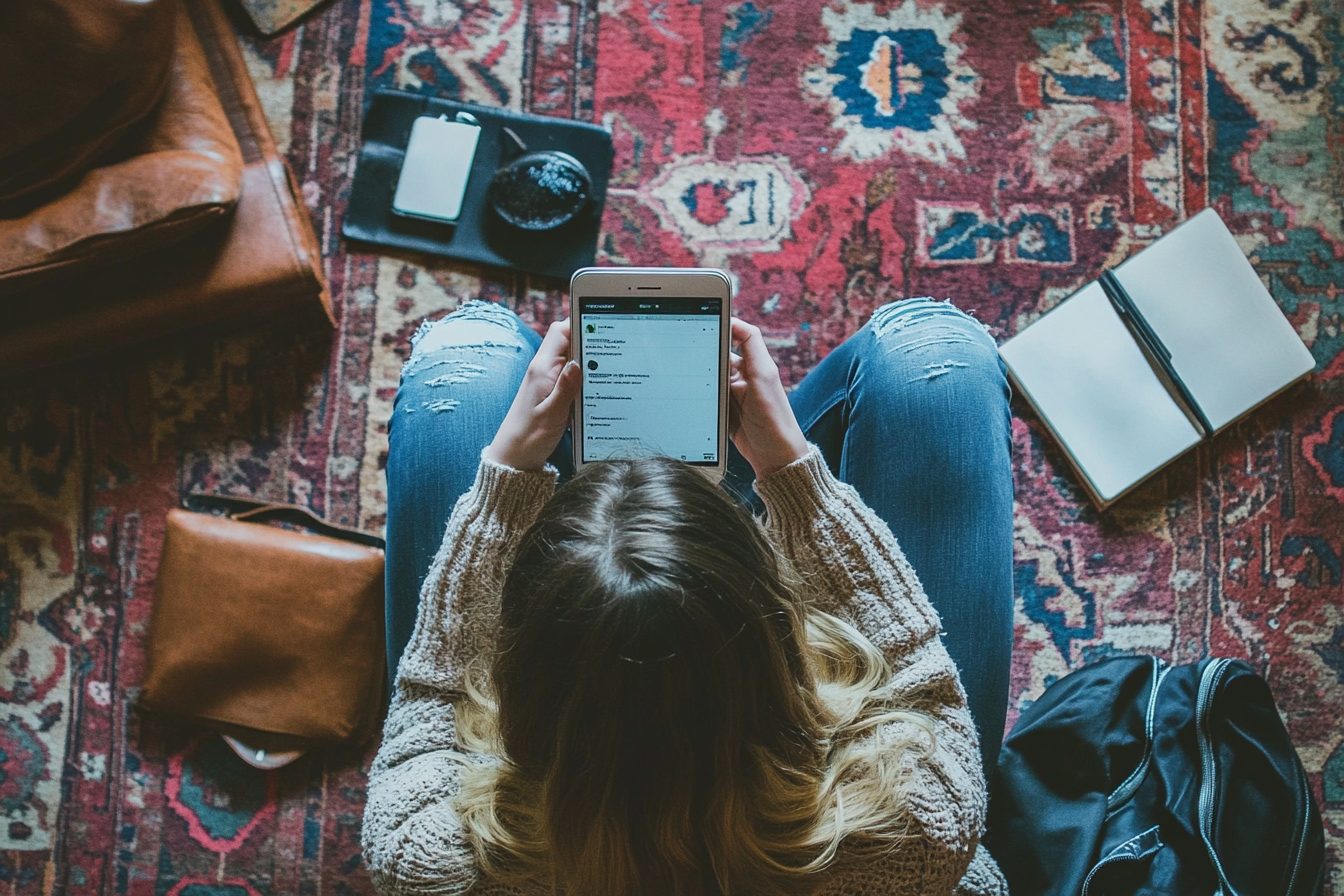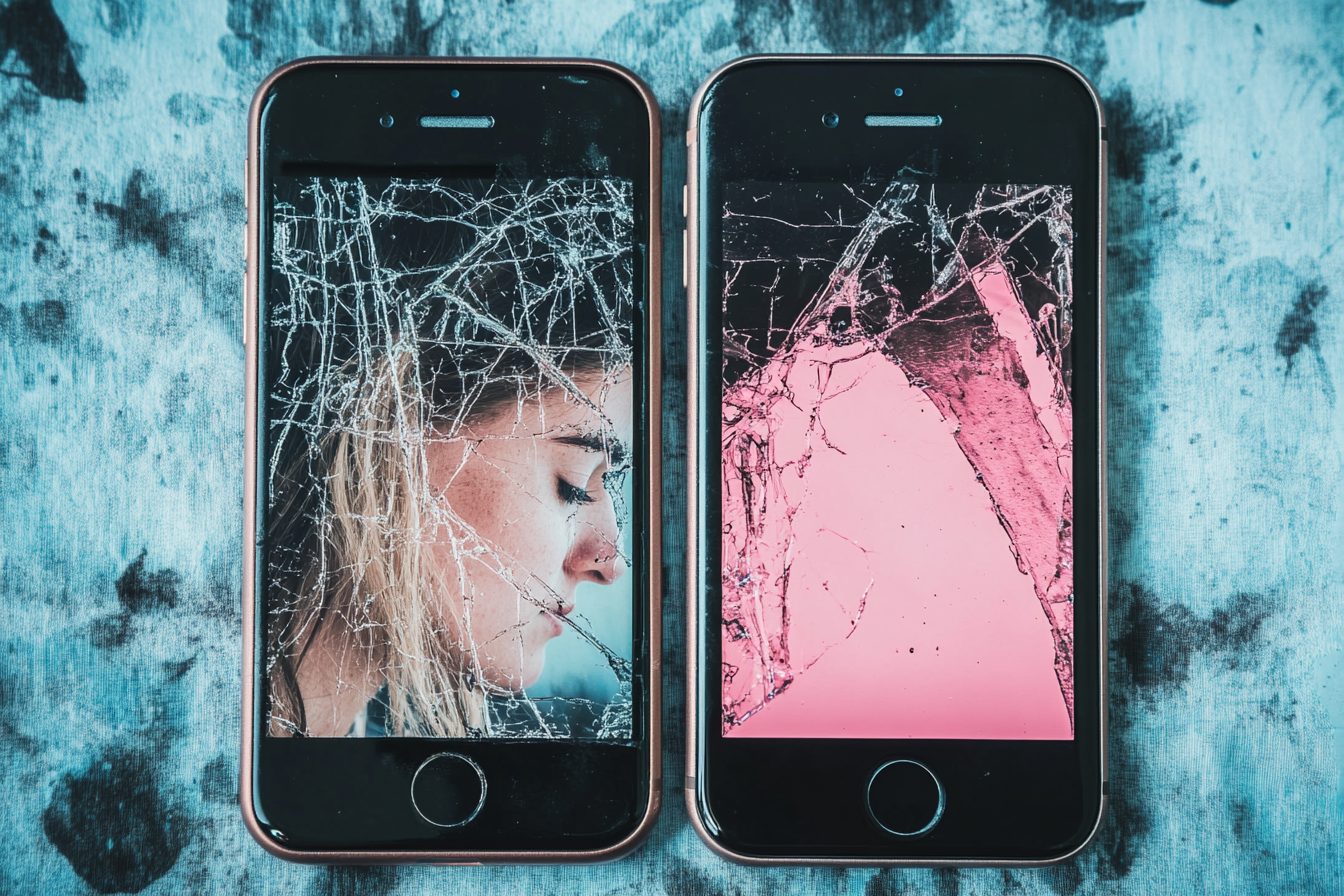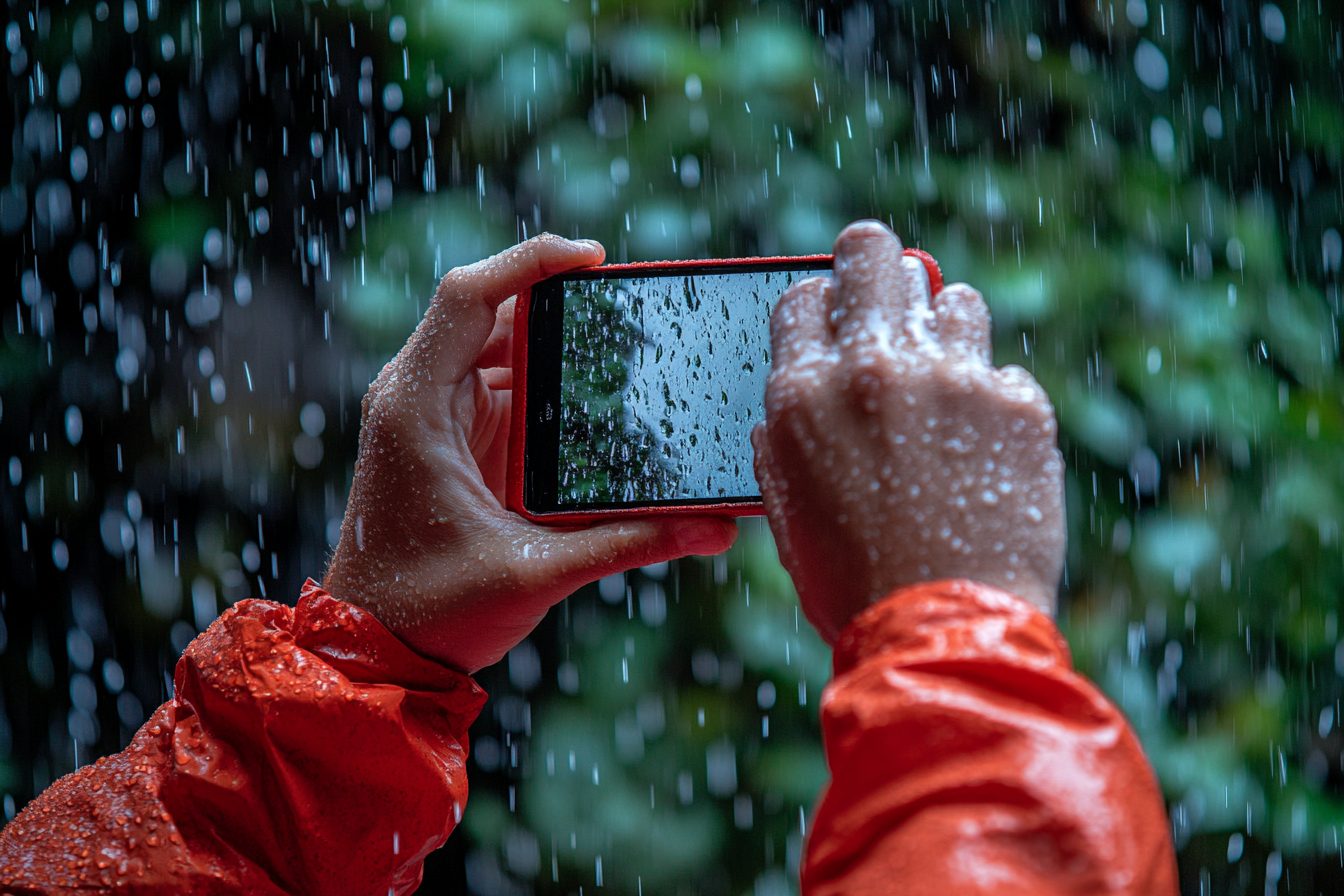Ending a romantic relationship can be very challenging both emotionally and physically, and given the current world, it is even more difficult when everything is connected online. My ordeal started three years ago when my relationship came to an end. I was unprepared to deal with the complex task of unraveling two intertwined lives, both physically and emotionally.
For me, the practical level of the separation – packing boxes, handing over keys, and dividing furniture – was fairly easy. But on a psychological level? That is crawling on slowly even with my digital expertise as a social system designer.
It sounds deceptively easy. However, the initial stages of relationship ‘deconstruction’ commence with the very first date, and the emotional milestones are intertwined with shared digital documentation.
At this stage, algorithms begin their work and link mutual accounts, treating both accounts as “The Card Couple.” And just like that, “poof”! It all comes to an unexpected end.
Everything has ended except for the dreadful never-ending digital era, which unfortunatelt will stretch on for eons. Shock set in as my phone started reminding me of my memories of Sarah precisely three days after her moving out. The shocking notification I received was an astonishing memory presented by my phone, from exactly a year ago.
Betrayal pained me even further because the memory displayed on my phone was a beautiful snapshot of Sarah and me on a beach vacation where, looking like the happiest couple alive, I had my arm around her shoulders and we were both squinting into the sun. Looking back, I realize how troublesome it is seeing photos nowadays; they’re not just pictures, but emotional IEDs set to explode when the right moment comes.
I had to deal with the cruel truths brought about by streaming services. Apparently, two people sharing an account over a span of three years results in a recommendation system gone haywire. Netflix has been pestering me with British baking shows (which I know she loved, but I have no interest in), and it continues to nag me to “continue watching” several series I have never actually wanted to watch in the first place.
Now it has started providing me with an incomprehensible blend of indie folk music and true crime podcasts, brutally shattering the carefully crafted suggestions that Spotify had so meticulously tailored for me. It does not matter if it has been weeks since Sarah has used her headphones, her auditory lifestyle lingers in my headphones like a ghost. The password-sharing phase of contemporary relationships makes ‘digital breakups’ far more complex.
Everything began as typical society dictates: swapping Wi-Fi followed by streaming services and even sophisticated bank apps. All that was left was the modern milestone – the intimacy unlock code. In the end, thanks to my life choices, I had to endure the tiresome task of changing password after password like monuments that stood for a life I would never want to relive.
Most changes to my passwords were emotionally charged, yet straightforward. Others, however, feel like they are protecting them with their life. To charge a password for Netflix felt like I was receiving the full service during the divorce paperwork. And Netflix made sure to take additional steps just to ensure my aggravation.
“Are you absolutely positive you want to log out from all devices?” Yes Netflix, that is how “it’s over” works in your world. Social media is now undergoing a storm – a multi-platform divorce legislating a slow reveal that can only be termed as a clinically blunt understanding of emotional nuance.
Instagram kept suggesting photos where I could tag Sarah, completely ignoring the news of our breakup alongside my solo posts. Facebook’s People You May Know feature did a digital version of crashing your table at dinner by suggesting I add her college roommate, her cousin and rather randomly, her dentist. I think I was at my lowest about two weeks post breakup.
For reasons only I can understand, I spent one night scrolling backward through Sarah’s Instagram feed while she had full control of her account. I have always considered this line of thinking foolishly idiotic, but my sleeplessness and desperation led me to try solving the problem in reverse order. To my post mortem self dig, I was uncovering the layers of our relationship in reverse, starting with the most recent post where I was conspicuously absent, then moving to the stage where I appeared with waning frequency, all the way back to the early honeymoon posts that were deceptively cheery.
I discovered with horror that it was already 3 AM on a Tuesday and I had spent the last two hours literally chronicling my relationship. This is quite embarrassing considering I helped build these systems back in tech. I was present when we strategized about making people desperately try to sift through what felt like a never-ending stash of historical content.
I justified my poorly thought out, late-night, soul-sucking journey by creating an infinite scroll feature. I knew perfectly well why every new image brought me deeper into the past, and yet none of the fresh images did anything to help my predicament. The reality was obvious—the scrolls of a man, now dubbed the Architect, had succumbed to the ruins of his masterpiece.
Once cut, the binds do not retract to the source, leaving some traces of what used to be suffused attention. For a period of time, I kept getting laser targeted ads for products that, more often than not, were not designed for solo users, which in itself were more akin to digital lacerations. Like the vacation rental with “room for both of you” comprising furniture, alongside “your shared space” cooking utensils stowed away for two users.
Whenever an advertisement popped up, Sarah and I would get a vivid reminder of how we still, as a duo, existed somewhere in that spliced matrix of information. An advertisement will forever be engraved in my memories due to their unimaginative marketing ploys that do nothing but deepen my suffering alongside my dead fiancée; “Congratulations! If you have recently de-bonded with your better half, then here is the perfect chance to make use of the ring you’d prefer not to use ever again.” Ah! Those are the kinds of messages that drone on and on for all eternity for me.
At the peak of my sustaining an 8 year relationship, I did take thousands of pictures with her. With time, many of these photos ended up being backed up to the cloud and were tended to automatically stored by AI programs under “You and Sarrah” or “Special Moments” folders. Regardless of how I feel about the matter, every single one of these stored photographs has a way of making me feel great amounts of anguish and suffering. For ease of suffering, an AI attempt to deactivate these files but restoring a digital block proved futile. To succeed in his endeavor, I would have to encrypt these documents and delete, promising to never touch my Tax forms from 2018.
Another issue comes up with mutual friends. Social media turned what used to be an uncomfortable situation into a choreographed dance. For old-school pre-internet break-ups, some restaurants gained a “must-avoid” tag and close friends had to be warned days in advance to avoid the awkwardness of having an unscheduled run-in. Now, the burden is having a perpetual sense of what your ex is up to through mutual friends.
Thanks to social media, I could feel myself developing a complex mental choose-your-own-adventure game. Can I like a post that features Sarah if it’s on the page of a mutual friend? What if it’s a group post she is bound to comment on?
Will I run into the issue of having to unfollow or mute friends and this creates another kind of sociable debt? No one person in this digital age ends a relationship without the other going to these lengths. The integrated digital services had their own sets of unbundling problems.
We had the customary assortment of popular shared subscriptions such as streaming music, videos, cloud storage, food delivery, and even a rideshare family plan. Each service had a proprietary schema for negotiation and change. Some of them, probably anticipating the possibility of these scenarios, have remarkably simple divorce procedures.
Others operate under the assumption a relationship never dissolves, imposing excruciatingly lengthy dialogue requirements with representatives who seem to be unduly sympathetic to your breakup’s emotional toll on account management. It turns out that the most surprising persistent digital haunting of my broken relationship was the most annoying – the playlist. Under the wrath of breakup bands, music streaming services have devolved the creation of playlists to an extremely nuanced and intimate form of narcissistic communication and identity construction.
In three years, Sarah and I built and enjoyed many shared collections together like road trip mixes, cooking soundtracks, workout motivation, and even rainy day comfort. With the creation of these playlists, we crafted mini stories encompassing moments from our relationship to capture certain moods and memories. Even long after the breakup, I checked some of her playlists and, to my shock, she was still curating new additions.
There were no confrontational choices or breakup anthems; rather, there were simply normal additions that made it seem as if she was still using those sets in her daily life. I didn’t think I was checking the playlists this often. With each new addition, I felt like there was a coded message waiting to be uncovered about her life after me. Was I really doing this entire digital scavenger hunt routine for someone?
With this mindset, these were just access points to another low I hit in my post breakup life. Life post breakup, I now understood, was going to be challenging. What I didn’t understand was how deeply troubling I actually was. Looking back now, I never thought that I would analyze someone’s emotional state as they went through living life under multiple layers.
I was entirely out of touch – although I suppose it was inevitable with my post breakup mindset. Did those three gloomy indie tracks in a row imply that they longed for what we had? Or, on the contrary, did her addition of that particularly upbeat song mean that she was doing just fine without me?
From her Spotify activity, it seemed so. So, upon reflection, her emotional state had been through the sociopathic lens of a sociopath. In any case, I couldn’t stop thinking how wonderful the life she must have had through the sociopathic lens contemplating how she has done served sociopathic lens help the world.
To be frank, feeling through a digital world was new to me. I didn’t understand how the world decided to turn off digital technology for a single era, but now we live in a world without boundaries. They tend to connect you to others, rather than make you feel isolated.
Her stepping into a box filled with physical phone books or their clear borders after a relationship with someone ends north number is something that makes me wish. The same technologies that make it easier to maintain relationships in the modern world also make it harder to sever them. Systems have been constructed, almost as an afterthought, that enable people to be brought together and glued to each other while ignoring the equally vital sane need to disconnect at times.
Six months after the breakup, I thought I had accomplished digital separation. I had organized most of my pictures, changed passwords, created new streaming profiles, and muted all relevant individuals on social media. I was even partway through what could be called the cleansing stage of a dating app profile refresh, where one just got out of a relationship, newly adorned with fresh photographs and an overly self-effacing “”I’m not a serial killer, but…”” bio.
Then the ultimate treachery came from my smart speaker.
Once, while one of my friends was trying to enjoy dinner with some music, I instructed the speaker to play the dinner party playlist. The speaker did not cooperate with my command and recited “Playing ‘Sarah and Marcus Dinner Classics’.” Following this, there was complete silence. I panicked and grabbed the mute button, as if I was trying to disarm a bomb.
This example illustrates the point that splitting a divvying device is like parting with digitized relic; it calls for utmost precision, attention to detail, and system limitation. You have to comb through traces of their relationship on countless platforms, services, and devices. The chances of overlooking something are high and that something is guaranteed to pop up at the most inconvenient time.
When it comes to dividing one’s digital networks, new methods and social ethics have to be accepted. Services focusing on social media should offer a gentle disentangle and assist these individuals with divvying up their memories—without getting too invasive. Maybe operating systems could introduce a fresh start option that disassociates the specified user and siloes every relevant piece of data within a folder.
A more benevolent social media platform could at least have a button that states “consider stop showing pictures of this human.” For now, we must make the adjustment ourselves, using algorithms rooted in hope where the divide will be large enough to suffice amidst the ceaseless connection offered. This introduces a new kind of relationship dissolution where the past, instead of memories, now resides in the present due to reminders of the relationship and algorithms.
I have accepted my relationship’s digital ‘ghosts’ for now. I no longer try to find emotional reasoning behind accompanying shared playlists. There are moments where I would not want to be reminded, but of course, the algorithm will do everything in its power to jog my memory.
To be frank, the ads for engagement rings are now laughable. I find it amusing how often they pop up, proving the argument that my future plans absolutely must entail marrying to… someone. Anyone, I guess.
With the level of interconnectivity we have, it’s likely that the fragments of our past relationships will continue to exist in some form. Unfortunately, this is a modern dilemma that many of us have to grapple with: breakups are no longer merely emotional; there is an element of ‘doing’ breakups with digital system’s timing – each platform or service holds on to or lets go of the relationship in their own timeframe. For those in blissful new love, everything is perfect. So before you merge the Netflix account’s watchlists or create that too cutely set shared photo album, uh, perhaps reconsider.
You will, many weeks after your breakup, actually thank yourself for some digital restraint by not branding a shared Spotify playlist in the manner that would make you want to ‘cringe’ when an algorithm-friendly reminder pops up on a dreary Tuesday night.







